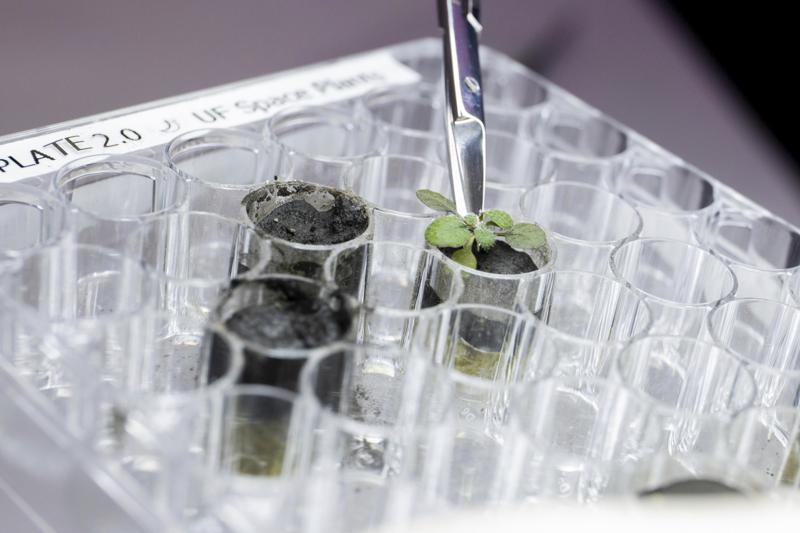At 10:56pm EDT on July 20, 1969, Neil Armstrong became the first human to set foot on the moon. In doing so, he and NASA fulfilled a dream as old as humanity.
“That’s one small step for man,” Armstrong said to a live, worldwide television audience of some 530 million people as his foot touched the moon’s surface. “One giant leap for mankind.”
Armstrong and Apollo 11 landed on the moon’s Sea of Tranquility. Five subsequent NASA missions landed astronauts on various lunar sites – ending in December 1972 – with twelve men having walked on the moon. Also, 842 pounds of lunar rocks and soil samples returned to Earth, greatly contributing to the understanding of the Moon’s composition and geological history.
You wouldn’t have thought NASA would wait nearly 53 years to test the lunar surface’s composition for plant-growth viability. But lo and behold, that’s the way it played out.
Researchers had no idea if anything would sprout and wanted to see if it could be used to grow food by the next generation of lunar explorers, and NASA said the timing for such an experiment was finally right, with the space agency looking to put astronauts back on the moon in a few years.
So NASA finally doled out 12 grams of moon “dirt” – it’s full of tiny, glass fragments from micrometeorite impacts – to the University of Florida researchers early last year, and the long-awaited planting took place last May in a lab.
And the results are finally in.
“Holy cow. Plants actually grow in lunar stuff. Are you kidding me?” said Robert Ferl of the University of Florida’s Institute of Food and Agricultural Sciences.
Ferl and his colleagues planted thale cress in moon soil returned by NASA’s moonwalkers. The good news: All of the seeds sprouted.
The downside was that after the first week, the coarseness and other properties of the lunar soil stressed the small, flowering weeds so much that they grew more slowly than seedlings planted in fake moon dirt from Earth. Most of the moon plants ended up stunted.
Results were published Thursday in Communications Biology.
The longer the soil was exposed to punishing cosmic radiation and solar wind on the moon, the worse the plants seemed to do. The Apollo 11 samples – because of the Sea of Tranquility’s older surface – were the least conducive for growth, according to scientists.
One solution might be to use younger geologic spots on the moon, like lava flows, for digging up planting soil. The environment also could be tweaked, altering the nutrient mixture or adjusting the artificial lighting,
“This is a big step forward to know that you can grow plants,” said Simon Gilroy, a space plant biologist at the University of Wisconsin-Madison. “The real next step is to go and do it on the surface of the moon.”

Amber Heard Testifies Johnny Depp ‘Tried To Kill Me’


